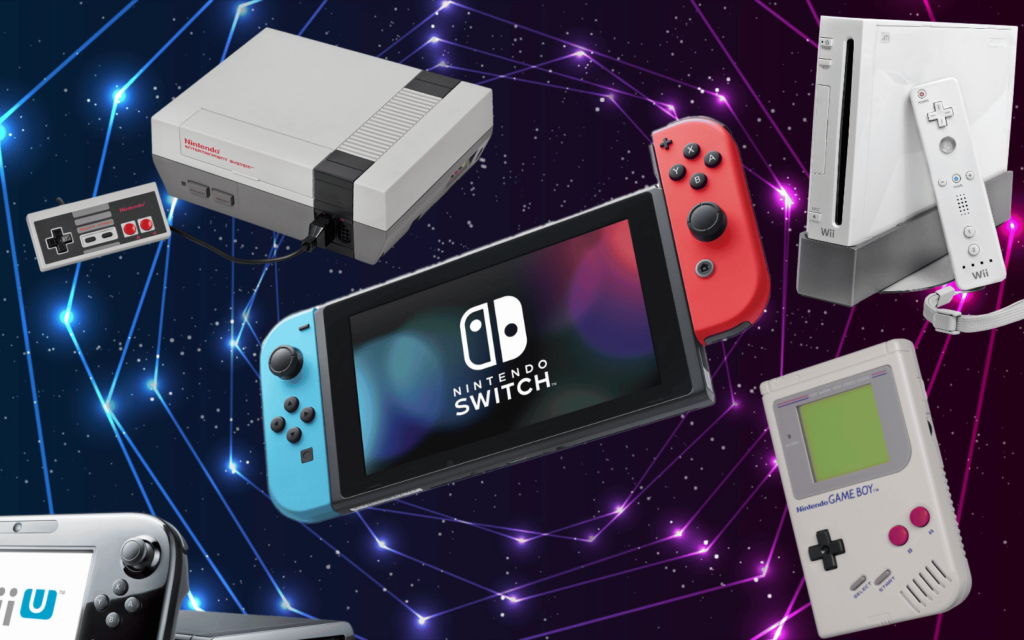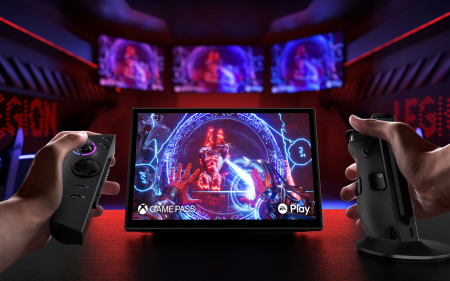We’re less than three weeks away from potentially the biggest title in Nintendo’s 133-year history (yeah, that caught us off guard too) – The Legend of Zelda: Tears of the Kingdom. Coming off the back of Nintendo’s magnum opus, we’re quite confident that it’s got the chops to somehow be even larger in scope than its predecessor.
The thing is, we haven’t played Tears of the Kingdom yet (expect a review in due course). We have played Breath of the Wild, a game that was only possible through years and years of experimentation and a complete reinvention of the wheel every ten-or-so years (see: 133-year history).
Were it not for the NES’ release in the ‘80s, the Wii’s oddly brilliant motion controls, or the GameCube’s massive array of excellent titles; the gaming landscape might’ve looked extremely different to how it does today. Nintendo’s consoles have always been influential – not always to interested onlookers building their own consoles – but rather to the company itself.
The NES

All the way back in 1983, Nintendo made history with the release of the Nintendo Entertainment System in Japan. The US, unfortunately, would have to wait until 1985 before it saw the release of the NES. Once the US deemed it safe to lower its guns for long enough to check out the incoming Japanese hardware, they saw that this wasn’t like consoles of old. This was an “entertainment system” that was still majorly marketed towards kids, but had a sleek, no-nonsense grey exterior that supposedly wasn’t just for videogames (we’re looking at you (even though we don’t want to) R.O.B the robot.)
Keep in mind, back in the 80s, the closest thing to a good gaming console was the Atari 2600 – a console that soured in the minds of consumers due to the poorly-coded games that plagued its short life, with E.T, in particular, doing considerable damage to the industry.
Nintendo didn’t want an E.T. of their own to deal with. It began a strict regime of vetting every third-party developer that wanted a piece of the NES fanbase – a convention that was soon being parroted by other developers and is now the standard in the gaming industry. If developers wanted to build and sell games on the NES, they needed Nintendo’s strict approval. Licensed games got the ‘Seal of Quality’ plastered on their faces, while developers were given access to the proprietary 10NES lockout hardware, a chip in the cartridge’s circuitry that corresponded with a chip inside the NES to stop the development of games Nintendo didn’t approve of. It’s a similar method that’s still used today, and arguably the reason for the golden generation of gaming that we’re currently living in. (Hey, we said arguably).
We haven’t even mentioned the games and franchises that the NES brought to the world. It was the birthplace of The Legend of Zelda, at-home Super Mario Bros, and the almighty Metroid. The impact of these games in the early 80s has managed to stretch all the way into 2023, with the latest Legend of Zelda, Tears of the Kingdom potentially being the biggest and best game of the year. And if you haven’t kept up with the state of 2023’s kids movies, the Super Mario Bros. Movie is currently tracking to earn $1 billion by the weekend.
The Game Boy

You might not believe us, but Nintendo’s Game Boy wasn’t the world’s first portable handheld. That title will always belong to something called a Microvision (here’s a Wikipedia link for those just as confused as us). It wasn’t even Nintendo’s first handheld gaming console, beaten to the market by the Game and Watch which was so named due to its ability to play games and tell the time through a digital clock.
Once the Game Boy hit the shelves in 1989, it proved to the world just how important handheld gaming could be. If you’ve ever sat in the backseat of your parent’s car, just waiting for that next second of light to place your Tetris line block, you’re probably a big reason why everyone is itching to make the next big handheld today. We’re looking at you, Asus. It also explains the insane popularity of Sony’s PSP back in 2005 – a popularity that wasn’t matched until 2017’s Nintendo Switch (but we’ll get to that).
And, just like the NES that came before it, the Game Boy spawned one of the world’s biggest franchises of all time; Pokémon. What started as Pocket Monsters Red and Green for the Game Boy in Japan in 1996, soon became Pokémon Red and Blue. And the rest, well, is history.
The Game Boy’s popularity led to the creation of the Game Boy Color in 1998, a console that could compete with other, better handhelds at the time due to its great battery life (you can thank the non-backlit LED screen for that). While the Color took reign of the market for three years, Nintendo upped itself with the release of the Game Boy Advance, a 32-bit handheld console that blew every other handheld out of the water, helping keep the Game Boy relevant for at least three more years (until the DS’ 2004 launch).
The Nintendo Wii

Perhaps Nintendo’s biggest trick of all time was getting the overweight, elderly, and generally resistant parents into gaming with the release of the Wii in 2007. Nintendo needed something different, something unique to recapture the hearts of the gaming industry. See, back in 2007, Nintendo was struggling, hard. Its previous flagship; the GameCube was in ‘last place’ in terms of the console wars, despite releasing some of the best games ever – Wind Waker and Resident Evil 4.
So, when Nintendo unveiled the slim, abnormally-shaped body and controller for the Wii, the world was left a little confused. But not just by the controls, by the marketing. This wasn’t just for kids. “It’s about everyone,” said Reggie Fils-Aime, Nintendo’s North American division head. All while selling for $250 less than its main competitors. And… it worked.
Swinging the controller meant swinging a sword, it meant turning a steering wheel, it meant money for Nintendo. It was intuitive enough for any demographic, coupled with fun, first-party… party games that boosted the console’s success. While the Wii failed to inspire other developers creatively, it did, in part, lead to the eventual creation of Nintendo’s current gen hardware.
After the success of Wii Sports, it became clear the route Nintendo should spend its time on: high-quality consoles and games that break the mould. It was clear that Sony and Microsoft had a stranglehold on the hardcore market, leaving the runway clear for Nintendo to invade the market of ‘niche’.
The Wii U

Sometimes niche can backfire, though. It’s been a second since we paid a thought to Nintendo’s Wii successor, the Wii U. You might be wondering what it’s doing on this list considering its poor sales, lack of third- and first-party games (barring Breath of the Wild) and too-odd control scheme. Well, who said that influential consoles had to be popular as well?
The world, and more importantly, Nintendo, learned a lot from the Wii U. It proved that a few HD visuals (a first for Nintendo at the time) and a niche idea weren’t enough to win over the hearts of the people. Consoles need something… more. Especially where hardware was concerned. The Wii U launched in March of 2012, a full year before both the PS4 and Xbox One filled the markets. It physically couldn’t keep up with the competition. That was true for Nintendo’s successor, the Switch, which had most of the great Wii U games on arrival (and ran them better too).
That’s not to say the Wii U didn’t have some redeeming qualities. Sure, that Gamepad was underpowered, but the idea was a clever one. Unfortunately, Nintendo forgot to explain that to people. Marketing for the Wii U was heavily aimed towards the Gamepad, convincing the average person that this was a handheld unworthy of their time and money. Speaking of, the $300/$350 price tags were certainly a factor in the Wii U’s downfall but were far from being the sole blame takers.
At the end of the day, the Wii U was a failure. But it gave us something that Nintendo fans will be talking about for years to come: the Switch.
The Switch

Is there anything to say about the Switch that hasn’t already been said? Well… yes. And no. We know that the Switch has been a favourite of the console world for the past six years, mainly due to its ingenious docking setup and a lineup of titles that has every game company frothing at the idea of copying.
And over the past couple of years, Steam, Asus, Logitech and about a dozen other developers have tried their hands at a portable handheld that could compete with the Switch. Some succeeded, though with a heftier price tag and lack of The Legend of Zelda, and will never enter the mainstream like Nintendo’s did.
But the Switch’s biggest ramifications have yet to be felt. At least, in our opinion. There’s still no word on when the Switch’s successor is releasing, and with Tears of the Kingdom right around the corner, it’s possible that the Switch’s longevity could be extended by a couple of years.




